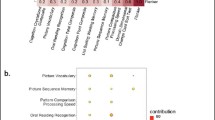Abstract
The visual analysis of EEG has shown useful in helping the diagnosis of Alzheimer disease (AD) when the diagnosis remains uncertain, being used in some clinical protocols. However, such analysis is subject to the inherent equipment imprecision, patient movement, electrical records, and physician interpretation of the visual analysis variation. The Artificial Neural Network (ANN) could be a helpful tool, appropriate to address problems such as prediction and pattern recognition. In this work, it has use a new class of ANN, the Paraconsistent Artificial Neural Network (PANN), which is capable of handling uncertain, inconsistent, and paracomplete information, for recognizing predetermined patterns of EEG and to assess its value as a possible auxiliary method for AD diagnosis. Thirty three patients with Alzheimer's disease and 34 controls patients of EEG records were obtained during relaxed wakefulness. It was considered as normal patient pattern, the background EEG activity between 8.0 and 12.0 Hz (with an average frequency of 10 Hz), allowing a range of 0.5 Hz. The PANN was able to recognize waves that belonging to their respective bands of clinical use (theta, delta, alpha, and beta), leading to an agreement with the clinical diagnosis at 82% of sensitivity and at 61% of specificity. Supported with these results, the PANN could be a promising tool to manipulate EEG analysis, bearing in mind the following considerations: the growing interest of specialists in EEG analysis visual and the ability of the PANN to deal directly imprecise, inconsistent and paracomplete data, providing an interesting quantitative and qualitative analysis.







Similar content being viewed by others
References
Duffy, F. H., Albert, M. S., Mcnulty, G., and Garvey, A. J., Age differences in brain electrical activity of healthy subjects. Ann. Neural. 16:430–438, 1984.
Nuwer, M. R., Comi, G., Emerson, R., Fuglsang-Frederiksen, J., Guérit, M., Hinrichs, H., Ikeda, A., Luccas, F. J. C., and Rappelsberger, P., IFCN standards for digital recording of clinical EEG. Electroencephalogr. Clin. Neurophysiol. 106:259–261, 1998.
Nitrini, R., Caramelli, P., Bottino, C. M., Damasceno, B. P., Brucki, S. M., Anghinah, R., and Academia Brasileira de Neurologia, Diagnosis of Alzheimer's disease in Brazil: diagnostic criteria and auxiliary tests. Recommendations of the Scientific Department of Cognitive Neurology and Aging of the Brazilian Academy of Neurology. Arq. Neuropsiquiatr. 63 (3A)713–719, 2005.
Montenegro, M. A., Cendes, F., Guerreiro, M. M., Guerreiro, C. A. M. EEG na Prática Clínica, LEMOS Editorial 2001, 303 pp.
Abe, J. M. Fundamentos da Lógica Anotada (in Portuguese), Ph.D. Thesis, FFLCH—USP, São Paulo, Brazil, 135 pp, 1992.
Anghinah, R. Estudo da densidade espectral e da coerência do eletrencefalograma em indivíduos adultos normais e com doença de Alzheimer provável (in Portuguese), Ph.D. Thesis, Faculdade de Medicina da Universidade de São Paulo, São Paulo, Brazil, 2003.
Da Costa, N. C. A., Abe, J. M., Silva Filho, J. I., Murolo, A. C., Leite, C. F. S. Lógica Paraconsistente Aplicada, ISBN 85-224-2218-4, Editora Atlas 1999, 214 pp.
Da Silva Filho JI, Abe JM. Fundamentos das Redes Neurais Paraconsistentes—Destacando Aplicações em Neurocomputação, Editora Arte & Ciência 2001, 247 pp.
Erganian, A., and Mahmoudi, B., Real-time ocular artifact suppression using recurrent neural network for electro-encephalogram based brain–computer interface.. Med. Biol. Eng. Comput. 43 (2)296–305, 2005.
Fausett, L., Fundamentals of neural network architectures, algorithms, and applications. Prentice Hall: Englewood Cliffs, 1994.
Subasi, A., Alkan, A., Koklukaya, E., and Kiymik, M. K., Wavelet neural network classification of EEG signals by using AR model with MLE preprocessing. Neural Networks. 18 (7)985–997, 2005.
Ventouras, E. M., Monoyou, E. A., Ktonas, P. Y., Paparrigopoulos, T., Dikeos, D. G., Uzunoglu, N. K., and Soldatos, C. R., Sleep spindle detection using artificial neural networks trained with filtered time-domain EEG: a feasibility study. Comput. Methods Programs Biomed. 78 (3)191–207, 2005.
Miller, A., The application of neural networks to imaging and signal processing in astronomy and medicine, Ph.D. thesis, Faculty of Science, Department of Physics, University of Southampton, 1993.
Weinstein, J., Kohn, K., and Grever, M., Neural computing in cancer drug development: predicting mechanism of action. Science. 258:447–451, 1992.
Baxt, W. J., Application of artificial neural network to clinical medicine. Lancet. 346:1135–1138, 1995.
Kocyigit, Y., Alkan, A., and Erol, H., Classification of EEG recordings by using fast independent component analysis and artificial neural network. J. Med. Syst. 32 (1)17–20, 2008.
Prado, J. C. A. Constelação fônica e redes neurais artificiais: aplicabilidade na análise computacional da produção da fala (in Portuguese). Ph.D. Thesis. FFLCH—USP; São Paulo, SP, BR; 2007.
Acknowledgements
The authors are grateful to the anonymous referees providing useful comments to improving this version of the paper.
Author information
Authors and Affiliations
Corresponding author
Rights and permissions
About this article
Cite this article
da Silva Lopes, H.F., Abe, J.M. & Anghinah, R. Application of Paraconsistent Artificial Neural Networks as a Method of Aid in the Diagnosis of Alzheimer Disease. J Med Syst 34, 1073–1081 (2010). https://doi.org/10.1007/s10916-009-9325-2
Received:
Accepted:
Published:
Issue Date:
DOI: https://doi.org/10.1007/s10916-009-9325-2




